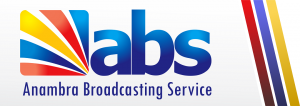The National Professional Officer for Tuberculosis for the World Health Organization,WHO, in the SouthEast region, Dr. Ufuoma Aduh says that tuberculosis treatment coverage in Anambra state stood at ninety five percent, which is one of the best in Nigeria.
Dr. Aduh made this known during a two-day training of doctors, nurses and other health care workers on the clinical and programmatic management of childhood tuberculosis organized by the Anambra State Tuberculosis and Leprosy Control Programme in Awka.

Health correspondent Chibuzor Okoye reports that delivering a lecture during the training, Dr. Aduh explained that they want to support and capacitated health care workers to better identify children that have TB, and that Anambra is doing extremely well in TB case findings which stood at ninety five percent, but noted that the state has not done better in identifying tuberculosis in children.
The WHO officer who commended the Anambra state government for organizing the training which he said is critical in identifying children with TB, urged participants to go back to their facilities and begin to identify and screen any suspected child with the symptoms of TB like weight loss, unexplained fever, night sweat, consistent cough for over two weeks among others.

Also in her lecture, Dr. Ifeoma Njelita from the Department of Community Medicine, Chukwuemeka Odumegwu Ojukwu University Teaching Hospital, Awka said that the essence of the training was to bring to up to speed the TB Focal persons in the various health care facilities in the state on the issue of childhood TB management.
Dr. Njelita pointed out that most of the patients receiving TB medicines in the various facilities in the state are adults and that the adults have children around them, which puts the children at risk of contracting the disease, hence the imperativeness of the training.

According to the University Don, the training would apart from teaching the participants the basic things they need to know and do in the management of TB cases in children, they will also teach them those signs they need to see in a child that will make such a child a suspect, and be diagnosed immediately in order for him or her to be placed on treatment.
The training featured questions and answers.





Comments are closed for this post.